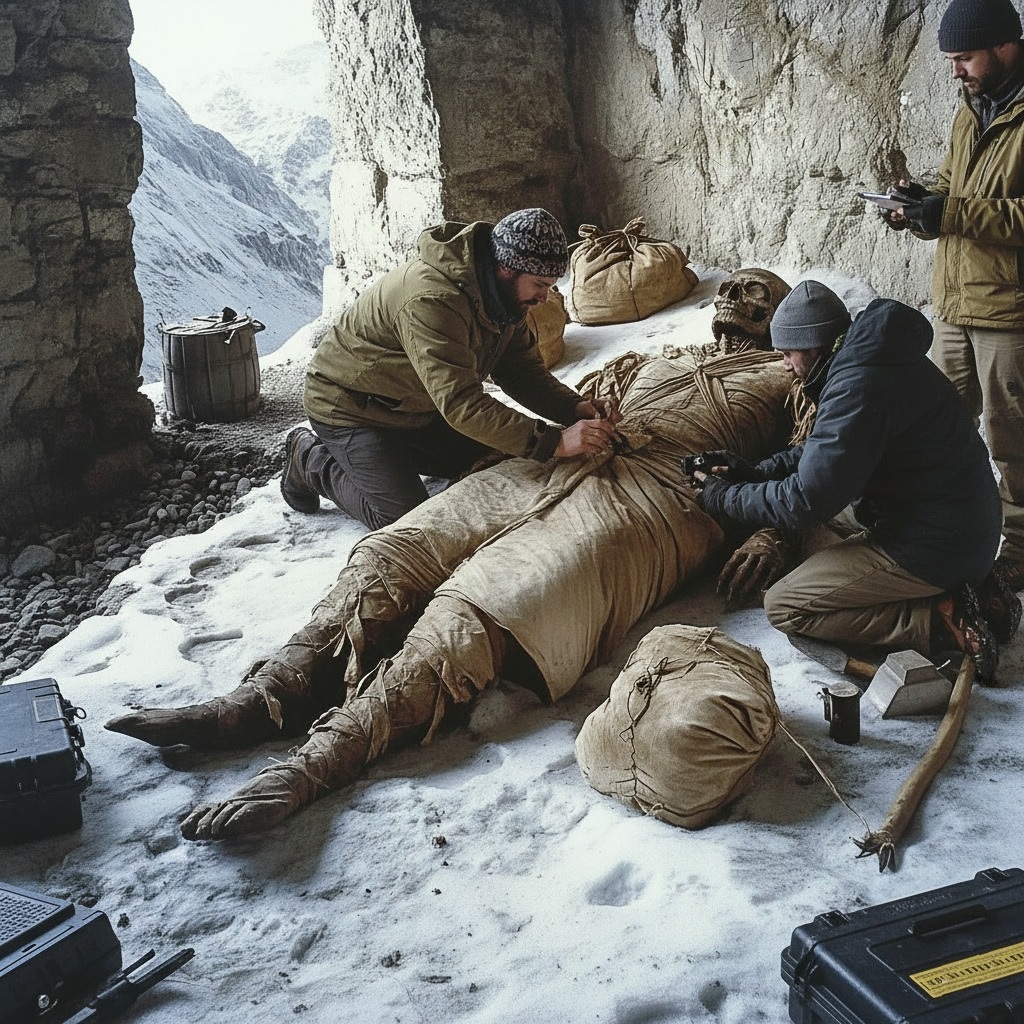Discovery in the Ötztal Alps: Unveiling the Ice Mummy’s Secrets

Summer of 1991, Ötztal Alps, Austria-Italy Border
The crisp mountain air, usually a balm, felt charged with an almost unbelievable tension. Helmut Simon, a German tourist hiking with his wife Erika in the Rofenkarl Valley of the Ötztal Alps, had stumbled upon something extraordinary. It wasn’t a lost backpack or a misplaced climbing axe; it was a body, partially emerging from a melting glacier. Initially, they thought it was a modern mountaineering accident, perhaps a climber who had perished decades ago. But as the authorities and eventually archaeologists arrived, the true magnitude of the discovery began to unfold.
Dr. Konrad Spindler, a leading prehistorian from the University of Innsbruck, was among the first to grasp the immense significance. The body wasn’t merely old; it was ancient. Preserved by the relentless ice, the individual lay on a bed of snow, partially covered by ice, in what appeared to be a natural rock shelter. The figure, later nicknamed “Ötzi” or the “Iceman,” was clad in an ensemble of animal hides and woven grasses – a coat, leggings, and shoes designed for a harsh, cold environment. Around him, a veritable time capsule of prehistoric life lay scattered: a sophisticated copper axe, a quiver with arrows, a dagger with a flint blade, a primitive backpack frame, and various pouches containing medicinal fungi and other personal effects. It was a snapshot from an era previously only imagined through fragmented artifacts.
The Early Bronze Age, Circa 3300 BCE, Ötztal Alps
For Ötzi, the moment of his demise was a culmination of a harsh life. He was a man of the mountains, his body bearing the scars of past injuries – fractured ribs, a healed broken nose, and signs of arthritis. His tattoos, simple lines and crosses, likely served a therapeutic purpose. The day he fell, or was brought down, was not a peaceful one. Forensic analysis would later reveal an arrow tip lodged in his left shoulder, followed by a blow to the head, suggesting a violent encounter, perhaps a chase or an ambush. He sought refuge in that rocky hollow, exhausted, wounded, and alone, as the biting winds of an approaching storm began to churn. The glacier, his silent witness, would soon claim him, preserving his final moments for millennia.
The Present Day, South Tyrol Museum of Archaeology, Bolzano, Italy
Today, Ötzi rests in a specially designed cold chamber, maintained at -6°C and 99% humidity, a condition mimicking his icy tomb. He is no longer a discovery but a subject of continuous study, a bridge to our distant past. Each new technological advancement, from DNA sequencing to advanced imaging, peels back another layer of his story. We know his last meal – wild goat and red deer, with einkorn wheat. We know he suffered from Lyme disease and carried the Helicobacter pylori bacterium. His genetic lineage has been traced, linking him to modern populations.
The “Discovery in the Ötztal Alps” didn’t just unveil a body; it opened a portal. Ötzi challenges our preconceived notions of early European life, demonstrating a sophisticated material culture and complex social structures. He is a silent ambassador from 5,300 years ago, reminding us that even in the most remote corners of our world, history lies waiting, sometimes frozen in time, ready to whisper its secrets to those who are patient enough to listen.
